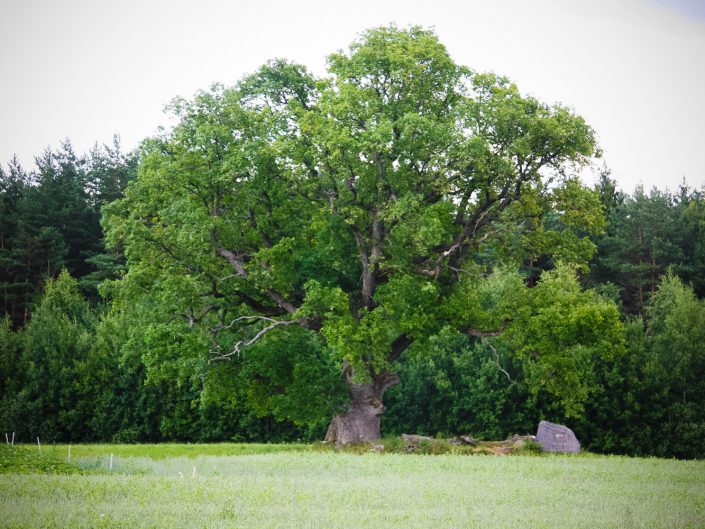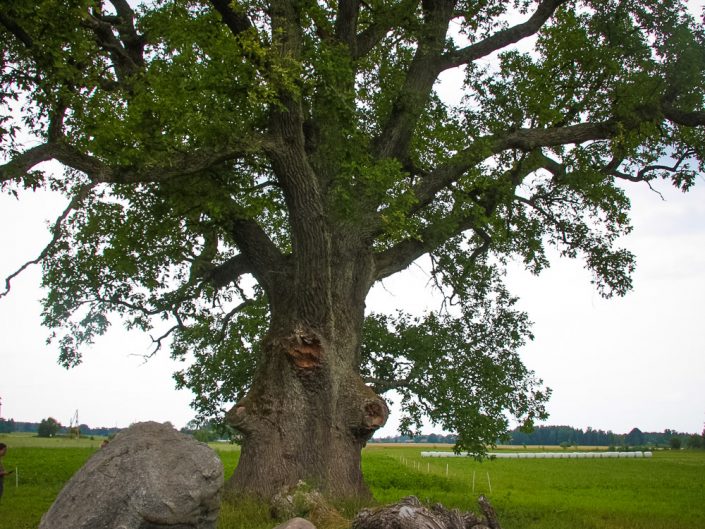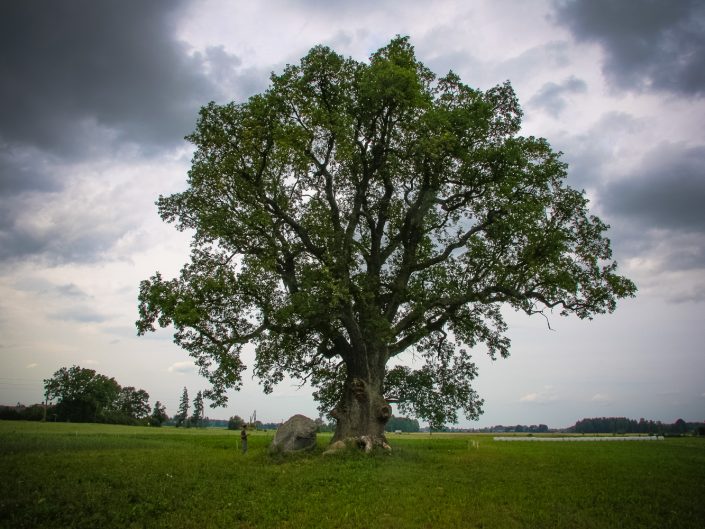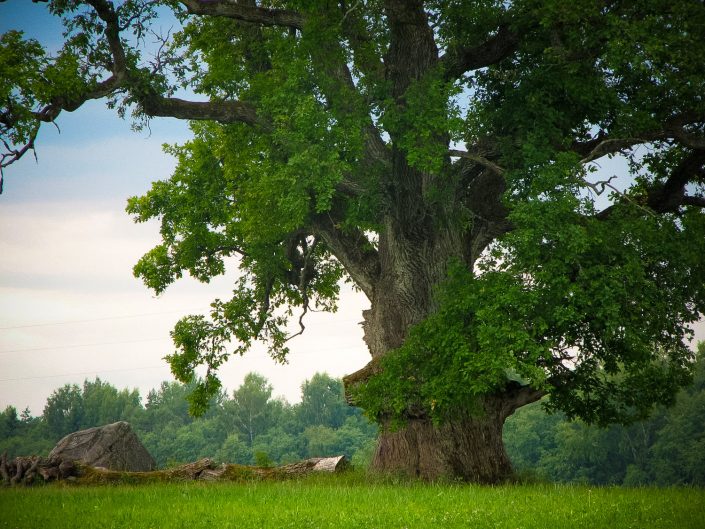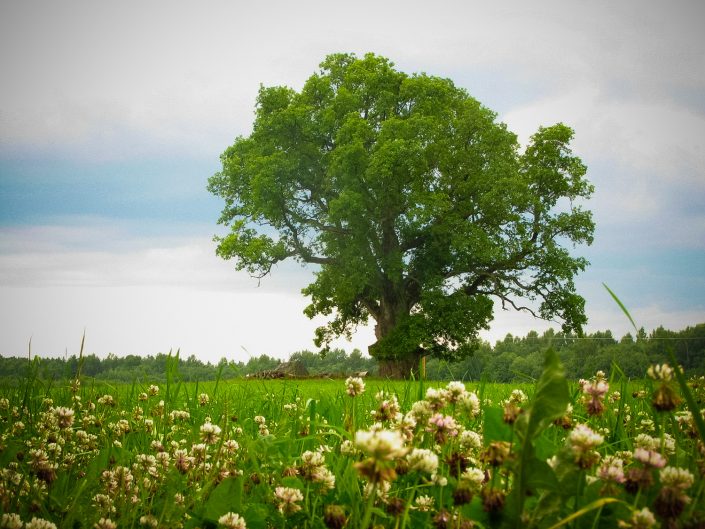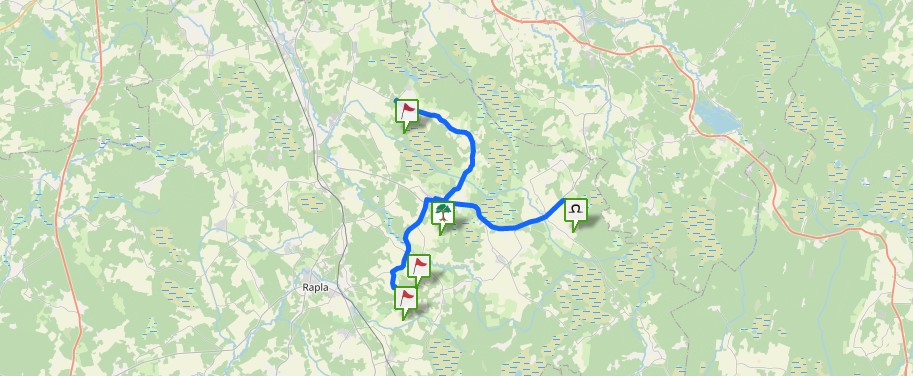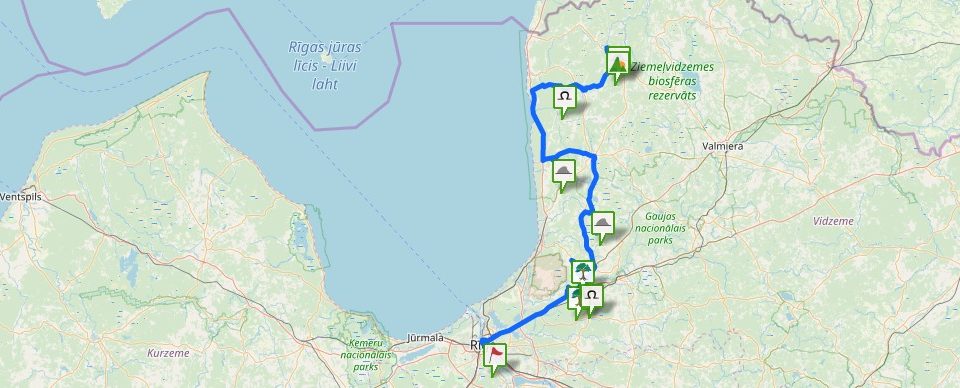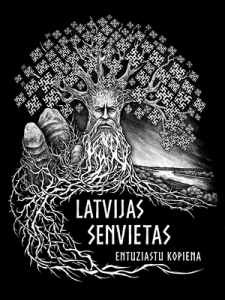State archaeological heritage (State Inspection for Heritage Protection, No 2461) and a secular tree. A remarkable, sceneric oak. It is also called the Swedish King’s Oak. The circumference of the trunk is 7 m, height of 18 m, crown of 420 m2, age about 250 years. It belongs not only to cult trees, but also to the so-called Swedish tree group. The Writer Augusts Melnalksnis described it for the first time in 1925 (Eniņš, 2008). One of the rare oaks that has not been devastated. According to tales, its location and rituals held by it were kept in secret. Other nearby objects: Mazsalaca, Skaņākalns Nature Park.
“In Vidzeme priests themselves were chopping off sacrificial oaks, thus destroying ancestors’ sacred sites, but the Ceipi Oak apparently was not yet so old and impressive in its size to raise suspicion. So it is assumed that this one is rather a “heir” of some ancient holy oak. Farmers, opposing the priests’ activities, started to worship and honour their gods further away and at not so impressive trees. No tale or legend has remained about the tree, because rituals, apparently, were kept in secret. At present at the oak there is a large granite boulder, on which there was a slab with an inscription “Ceipi Sacrificial Oak. Here during the battle against the White Guards of May 1919, Member of the Council of Mazsalaca Workers’ Deputies Eduards Sīpols (1899–1919) was killed”. (G. Eniņš. 100 Most Secular and Holiest (100 dižākie un svētākie). 2008.)

